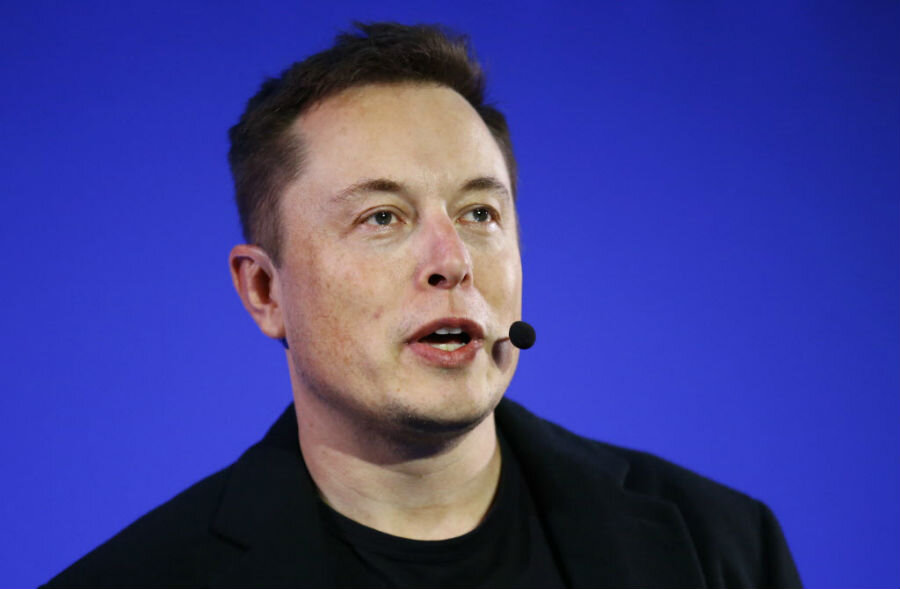What are Elon Musk's plans for Tesla?
Loading...
A decade – of multiple spacecraft launches, autonomous vehicle progress, and multi-planetary life goals – has gone by since Elon Musk last released his “master plan” on the Tesla blog. And Mr. Musk, the PayPal co-founder who helms the innovative electric car company Tesla and the aeronautics company SpaceX, has decided it was time for an update, posting the highly anticipated “Master Plan, Part Deux” on the Tesla blog Wednesday.
The post, which is focused on Tesla, is split into two parts: reviewing the master plan written 10 years ago and evaluating its progress, and second, updating these goals and laying out more specifics. The cerebral Musk adds a healthy dose of his own thought process and justifications for why he’ll move the way he plans into his post.
The result? A 2016 manifesto that embraces similar ideals that powered his first post, namely the time-sensitive exigency to “achieve a sustainable energy economy” before we “run out of fossil fuels to burn and civilization will collapse,” as Musk wrote in yesterday's post.
In this “part deux” of his road map to sustainability, we see how the world-according-to-Musk would operate to achieve this goal, from car and homeowners holding the keys to their own utilities to an advanced car sharing system where your car can go off and make you money while you are on vacation.
His vision, he assures his readers, is one that would enable the human race to continue to enjoy our planet, writing:
The point of all this was, and remains, accelerating the advent of sustainable energy, so that we can imagine far into the future and life is still good. That's what 'sustainable' means. It's not some silly, hippy thing – it matters for everyone.
The proposal comes several months after Tesla sold about $1.7 billion in new shares, funds that observers expect will be invested in speeding up the Tesla Model 3 development, thus generating revenue more quickly for the company’s lofty future goals.
The first point that Musk lays out in his post follows up on his June 21 proposal for Tesla to buy SolarCity, a solar panel production company where Musk already holds 22 percent of the company shares, according to Automotive News. The integrated companies, he writes, would allow for a “solar-roof-with-battery product that just works.” Once ordered and installed, the roof would enable an individual to generate his or her own utilities with a simple service contract. Sticking to the technics, he does not explore how this would interface with the government-subsidized energy industry.
Musk also outlines how Tesla will expand across transport markets. He writes that with the addition of the Model 3’s compact SUV and pick-up truck models they will have addressed “most of the consumer market.” So now for the bigger fish: heavy duty trucks and “high passenger-density urban transport” vehicles – both of which are already in development, he says.
This is were Musk starts talking autonomy – which has been a hallmark of his vision, and caused Tesla to be investigated by National Highway Traffic Safety Administration for an accident caused by the forerunner, Tesla’s Autopilot system.
The new public transportation Musk proposes will operate autonomously, decreasing traffic congestion and turning bus drivers into “fleet managers.” Private cars will function for the public good, too: Because these vehicles will drive themselves, once your autonomous Tesla drops you off at home, work, or you leave for vacation, you can “add your car to the Tesla shared fleet” where it essentially will act as an autonomous Uber, making you money as it ferries others around.
This innovation would offset or even exceed the monthly loan or lease cost of the Tesla, Musk writes, meaning that he doesn’t need to develop a cheaper vehicle than the Tesla 3.
That wrinkle is a possible departure from the 2006 manifesto where Musk delineated different tiers of Teslas that will finally move down to an affordable price; here he says this share capability would do that for him.
In fact, he implies that private ownership won’t even be necessary, in a somewhat contrary position to what one might expect of a car company owner, writing: “In cities where demand exceeds the supply of customer-owned cars, Tesla will operate its own fleet, ensuring you can always hail a ride from us no matter where you are.”
The post is short on mention of timelines for the bigger picture innovations, but Musk says we can expect better Tesla 3 factories by 2018 and heavy-duty vehicles next year.







